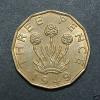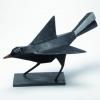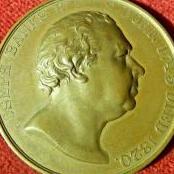Theories as to the precise reason why die numbers were placed on a very few pennies of 1863 have been aired on many occasions over the years, both by independent authors and on here. The favourite two being a) to test the die, and b) to identify the individual die operator. But in truth no-one knows for certain, and I hasten to add, are still very much in the dark.
Testing the die strength/quality does sound the most plausible option to me, as we know from very well highlighted documentation made at the time, that die strength was a major issue. Although one would have thought that by 1863, many of the problems surrounding dies breaking had been resolved. Nevertheless, die cracks were still frequent at this time, as was die slippage.
If it was to ID an individual operator, I'm not sure quite how effective that would be (or the point of it), as staff tend to either leave or move to a different area of the business. I'm sure that was just as much the case in 1863 as it is now. So clearly the initial operator assigned to say, die No 4, might have left a few weeks later, then it would be someone else. Although of course, the new man could easily have been assigned a different number. Nevertheless, we only have 4 numbers to go on, and a vanishingly small number of them. So that suggests - and I don't think there would be any dispute over this - it was a very short lived experiment. Started for no clearly defined reason, and ended again, for no reason apparent to us.
As a result of the uncertainty I decided to send an e mail to the Royal Mint enquiring as to whether or not they might know of a possible reason. I knew this was a very, very long shot, as I've absolutely no doubt the same question, or variants of it, have been sent to them on many previous occasions. Also, I knew that to get anywhere, the person dealing with my enquiry would have to extensively interrogate old records from 160 odd years ago, potentially reading a lot of pages, and I wasn't sure how much enthusiasm they'd have for that, or whether in fact they'd just rely on previous stock replies to answer my current enquiry. Obviously one's level of success will vary depending on the skill, intelligence and motivation of that person.
Nevertheless, I don't recall ever reading what the Royal Mint's view was of this, hence why I pressed ahead with my enquiry. Here is my enquiry and their reply, which I very much appreciate:-
So there we have it - not much. Kudos to them for replying though. I honestly thought it might be forgotten with the pandemic having caused so much disruption. So many thanks to Chris Barker.
I did wonder whether to put this in the "More Pennies" thread, but decided to create a new thread, as it might be easier to locate on a google or site search if anyone else makes a similar enquiry. It might well help them.
I did wonder whether to just add to the "More Pennies" thread, rather than create a new one. But thought
 Coinpublications.com
Coinpublications.com









